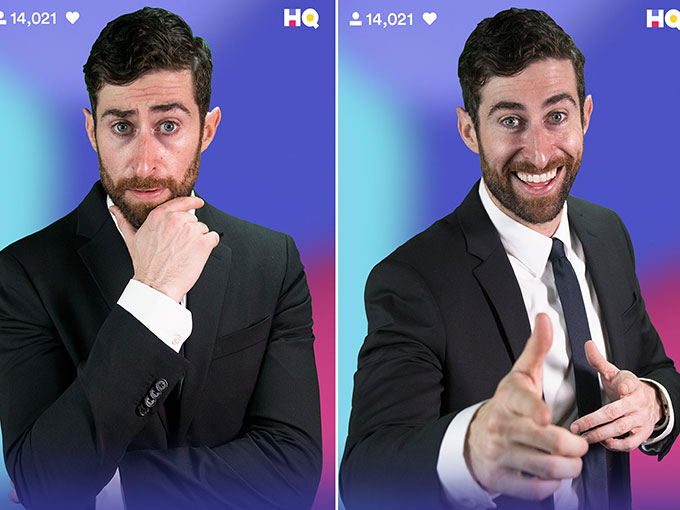Consider this scenario—it’s 2017, and an executive is pitching a new media concept to potential investors: It’s must-see-TV, a classic game-show, but on a phone. We anticipate a live audience of one to two million, and because it’s an interactive game, there’s no opportunity for catch-up or delayed streaming.
Given today’s common wisdom that schedules are dead (because audiences engage with the content they want, when they want it and where they want it), one might think that pitcher would be laughed out of the room. But someone took the chance, and today HQ Trivia is one of the hottest properties in media.
Twice per day, as many as two million players stop what they’re doing to answer ridiculous trivia questions—and by “ridiculous” I mean that I’ve never been past question six—to win a share of the pot. It only took the chance to win some cash, and a highly intuitive product, to put the lie to pundits’ death knell for appointment media.
HQ is even reaching Gen Z—kids who’ve never known anything other than an on-demand world. I recently heard about a New York high school where everything comes to a halt when HQ’s afternoon game push notification comes out. HQ parentco Intermedia Labs, meanwhile, clearly has a bigger future in mind than a single franchise. The company recently received US$15 million in venture-capital investment and has a valuation of US$100 million.
It’s easy to look at a live-TV revival and say that everything old is new again. There are certainly other signs. Kids and families are returning to big-screen televisions, with an accompanying rise in “family” programming. Board game and puzzle sales are up, too. There must be more behind the HQ rage, though. So here are three important reasons why our researchers at UK-based Dubit think HQ became a hit, and what the app means for the children’s media industry at large.
Heightened urgency
HQ feels fresh, like a pop-up shop next to a shopping mall. It came out of nowhere and (especially given the likely ambitions of its parent) could morph any time. That’s not only true of the franchise, but also of every game round, since it can only be played or watched live. Like McDonald’s Szechuan sauce, get it before it’s gone.
A rash of copycat live content could dilute HQ’s immediacy. Piggybacking on others’ innovations has been a long-time bane of children’s media, flooding the market and turning “momentous” into “meh.” How could you use urgency to add something unique and authentic to your brand or stories? Might you clue in your biggest fans to ephemeral content to heighten their feelings of a special connection? Would they share that new excitement with others? Could you bring in new audiences by placing surprises where the target audience is likely to discover it?
When it’s most needed
HQ shows up at times when its biggest potential audiences need a short break. Those New York students are eager to drop everything for the afternoon game, since it’s at the end of their school day. On the US west coast, it’s a lunch diversion. The evening round plays out as easterners settle in after dinner and the PTZ is transitioning from work.
Dubit has been talking for some time about “emotional scheduling.” In a world of overwhelming content and almost complete free choice, we’re finding that people are self-scheduling to bring order to the chaos. We see young people’s content and platform choices substantially influenced by time of day, which is often a proxy for their emotional state. We therefore advise content creators and distributors to “own a moment.” Understand when, where and why a product meets a specific need. Live participation in a game establishes such a moment—a brief breathing space in the day’s rhythm—and one that can be solitary or social.
No one goes there anymore, it’s too crowded
People don’t usually choose to eat in an empty restaurant. We all like affirmation that others, too, are “into” what we like. HQ makes obvious its massive numbers of people gathered in real time, with a live messaging scroll (that goes too fast to read) and a player counter, which serves the dual purpose of letting successful players watch the competition dwindle.
Beyond the age of eight or so, the youth audience takes its social cues from peers. In Dubit’s newest wave of our Trends report, not surprisingly, friends are the biggest means of discovering new content from age five onward, and second only to YouTube for where kids search out something fresh. Mindful of adhering to COPPA and GDPR rules, what mechanic could you build in to make the young users feel like they’re part of a community of their peers?
The return to traditional media consumption patterns is in some extent a response to challenging economics. The tried-and-true is often safest. Uniting the family around the big-screen TV offers a larger potential audience than segmenting viewers. Reinventing the quiz show for the mobile generation refreshes our relationship with the phone or tablet. We don’t need to invent new types of content, just enable more users to engage with the old types.
What other classics are out there, waiting to be refreshed and adapted? Who will make the unlikely pitch that funds the next surprising hit? I don’t know. Maybe it’s time to dust off my Magic 8 Ball?






















